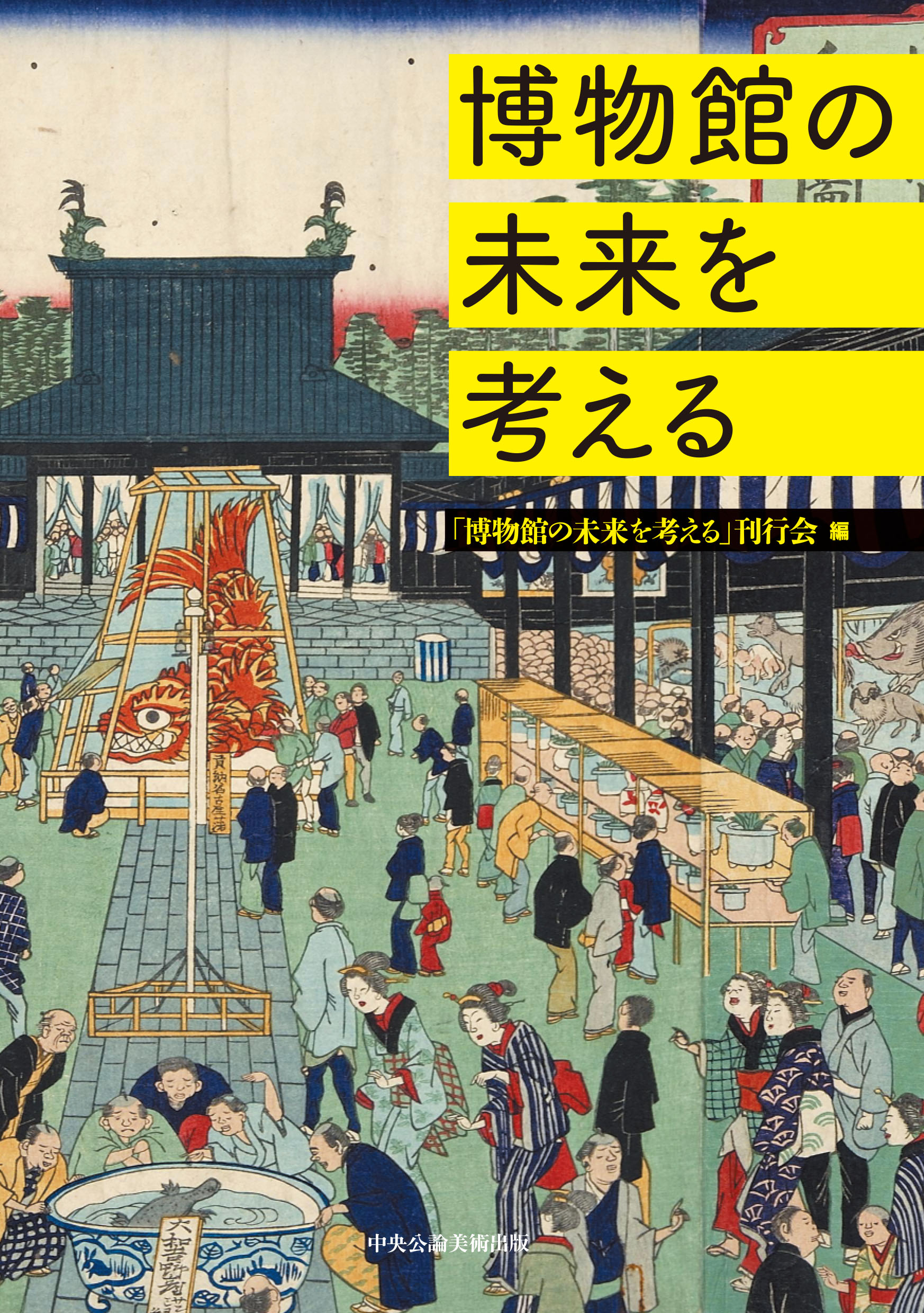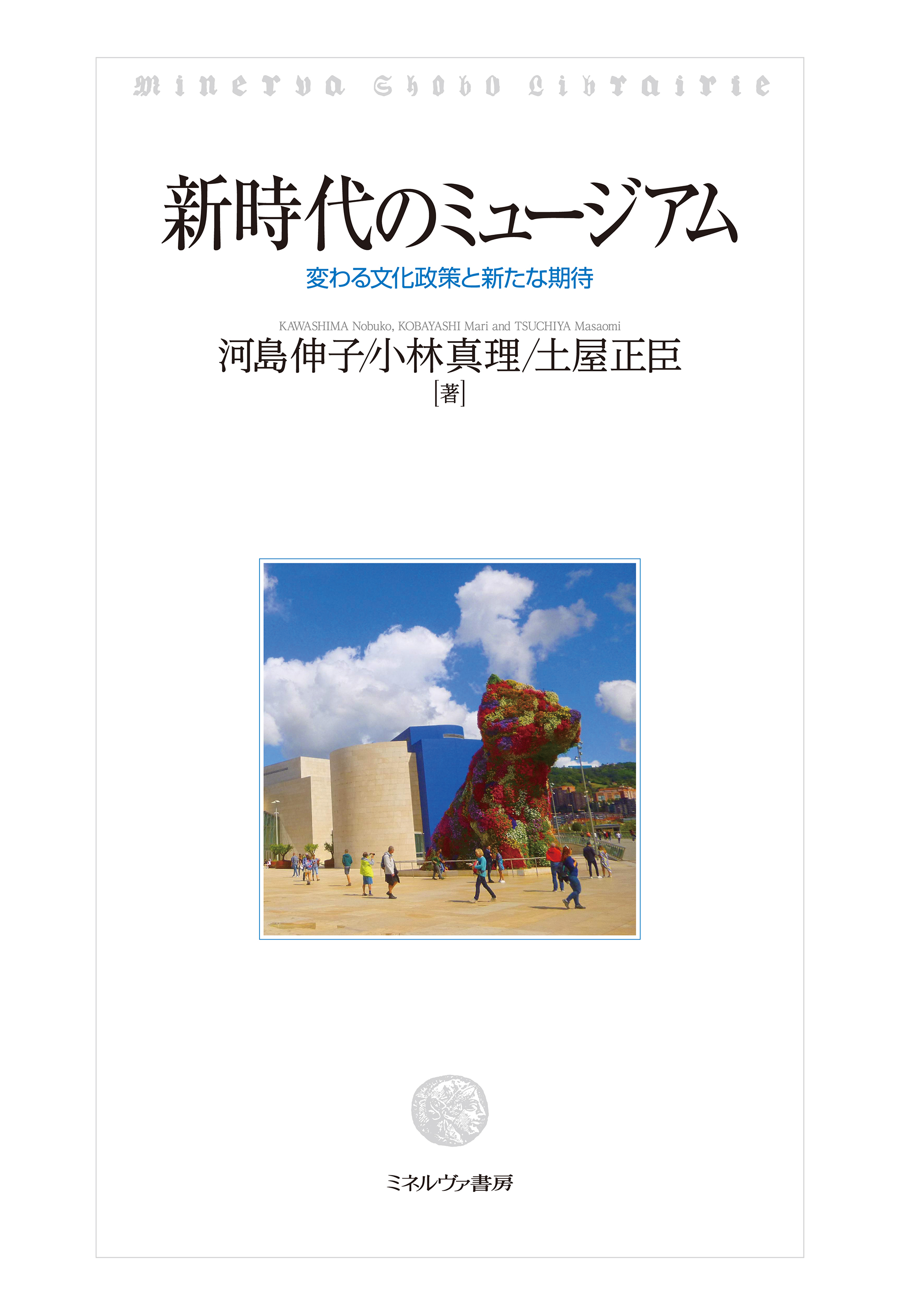
Title
Hakubutsukan no mirai o kangaeru (Thinking about the Future of Museums)
Size
184 pages, A5 format
Language
Japanese
Released
August, 2021
ISBN
978-4-8055-0896-1
Published by
Chuokouronbijyutsu
Book Info
See Book Availability at Library
Japanese Page
There are many of you who, upon reading the book’s title Thinking about the Future of Museums, might think, “that’s a bit grandiose.”
But it was necessary to take on such a big topic. At the time of the book’s publication in August of 2021, discussions regarding the revision of Japan’s Museum Act were getting into full swing. The editors of the book felt the need (and also a strong desire) to address those discussions head on.
It was in November 2019 that the Museum Working Group was established within the Council for Cultural Affairs to begin exploring how to promote museums. Although the working group’s objective, nominally, was to come up with ways to promote museums, everyone involved was aware that the immediate goal was revision of the Museum Act.
Despite undergoing numerous minor revisions, the Museum Act had not been fundamentally revised since its enactment in 1951. Over its nearly 70-year history, the Act had fallen behind the times. In the first place, there was no way that a law enacted in 1951 when there were only 202 museums throughout Japan could address today’s circumstances where there are 5,738 museums. It was also evident that the two pillars of the Act, the museum registration system and the curator system, were in need of reform.
That said, there was a functioning museum mechanism based on various legal and administrative apparatuses as well as coordination among relevant organizations that had been established over 70 years. Any attempt to substantially change the overarching the Museum Act would necessarily cause strain somewhere in the mechanism. It is for this reason that the fundamental reform attempted in 2008 stalled as a result of lobbying and administrative politics and ultimately ended in “disappointment.”
That is why, this time, there was a strong desire to realize fundamental revision. It was this desire that led the Science Council of Japan’s Committee on the History and Philosophy of Science and Technology, Subcommittee on Organizational Management of Museums and Art Galleries to act. First, in August 2020, the subcommittee enumerated revision items that should be sought in a document titled Further Recommendations for Revision of the Museum Act: Building on 2017 Recommendations. In the same document, as reference, the subcommittee included examples of museum systems in other countries, which tend to be overlooked in discussions within Japan.
Next, hoping to present these arguments to the Council for Cultural Affairs Working Group on Museums, the Agency for Cultural Affairs (the council’s parent organization), and various organizations with a stake in the museum system, the subcommittee held an online symposium in March 2021 titled “Thinking about the Future of the Museum System: Focusing on Revision of the Museum Act” (jointly hosted by the Museological Society of Japan and the Nagoya University Graduate School of Humanities Research Center for Cultural Heritage and Texts). The symposium was met with broad response, with approximately 800 registrants and approximately 500 participants on the day of the symposium. This book Thinking about the Future of Museums summarizes the presentations and discussions from this symposium.
I believe that this book impacted the revision of the Museum Act realized at the ordinary session of the Diet in April 2022. I would invite you to read the book and think how it specifically affected the revision.
That said, the impacts of the book were limited. Of the two pillars of the Act, only the museum registration system was revised; revision of the curator system was deferred as an issue to be addressed in the medium to long term.
At present, we are waiting for the revisions to enter into effect in April 2023. Please do not think that the book is no longer useful now that the revision has been completed. The true worth of the book lies in the design of a new museum system, which is yet to come.
One of the most significant contributions of this book is the insight it provides regarding the role of researchers in the revision of laws such as the Museum Act that have substantial meaning to the humanities and social sciences. In today’s context when the social significance of the Science Council of Japan is being questioned, it is important that researchers in the humanities and social sciences proactively engage in discussions on a wide range of present-day social issues.
Deferral of the reform of the curator system means that researchers will undoubtedly have opportunities to act in the future. I am sure this book will prove its usefulness then as well.
(Written by MATSUDA Akira, Associate Professor, Graduate School of Humanities and Sociology / 2022)



 Find a book
Find a book


